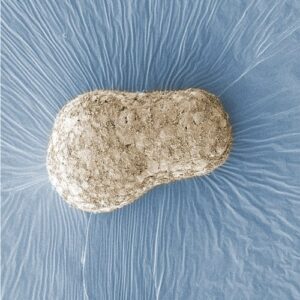Wnt ligands are signaling proteins that play an important role in embryogenesis and adult tissue homeostasis. They are typically produced by source cells and activate the Wnt signaling pathway in target cells located distant from the source. While extensively studied, the mechanisms by which Wnt ligands spread within tissues remained unclear.
In this study, the Lenne and Bertrand teams investigated how Wnt ligands propagate in the developing tissue of C. elegans embryos. They identified the sources of Wnt and showed that the ligands can be detected at a distance from these cells. Using fluorescence correlation spectroscopy (FCS), they demonstrated that Wnt molecules are secreted and diffuse freely between cells in the extracellular space. Significantly, they observed that this diffusion process was rapid enough for newly secreted Wnts to reach target cells within a time shorter than the cell cycle. Finally, they employed experimentally measured diffusion coefficients in numerical simulations to propose a model where Wnt ligand diffusion establishes polarity in the developing tissue.
This work provides novel insights into the dynamics of Wnt spreading and long-range signaling.
Recouvreux et al., Transfer of polarity information via diffusion of Wnt ligands in C. elegans embryos, Current Biology (2024), https://doi.org/10.1016/j.cub.2024.03.030




